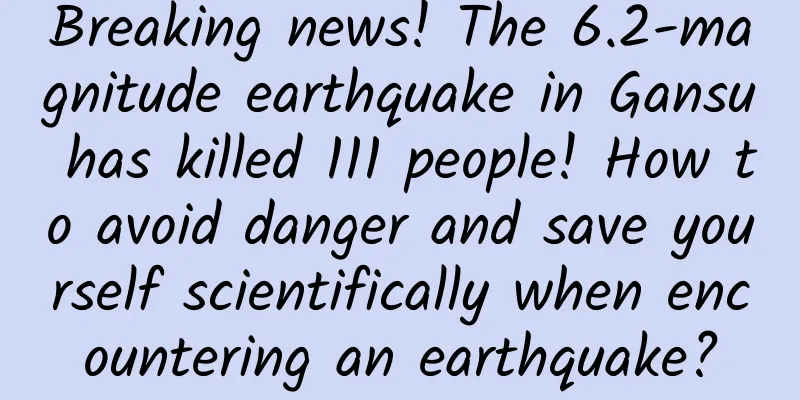China's Sky Survey Telescope is here! What can it "survey" and how powerful is it?

|
On April 29, 2021, the launch of the Tianhe core module kicked off the comprehensive construction of the Chinese space station. On December 25, 2021, the successor to the Hubble Telescope, the James Webb Space Telescope (JWST), a new generation of space telescopes, was launched to the more distant deep space. Countless astronomers in my country are eagerly looking forward to it: When will we have our own space telescope to explore the universe with China's deep space eyes? Exciting news came—— recently Hao Chun, Director of China's Manned Space Engineering Office Introduced at the State Council Information Office press conference Planned launch next year my country's first large-scale space survey telescope Conducting wide-area sky surveys In the future, it will co-orbit with the Chinese space station. Bringing panoramic high-definition pictures of the universe China's Space Station Telescope Li Ran, a responsible scientist for scientific data, said After running This telescope will be the largest camera in space Artistic conception of China's space station telescope. Image source: Xinhuanet “The largest camera in space” What’s so great about it? Better observation of the universe According to Li Ran, as China's most expensive space astronomy facility, the main task of the China Space Station Telescope is to help answer the most basic questions about the universe, such as what dark matter and dark energy are, how galaxies evolve, and help humans understand the universe. It will take pictures of more than 40% of the night sky, which is equivalent to cutting a piece of the universe back and putting it on Earth. These images will be digitized, generating a very large amount of data, and scientists around the world can use this information to conduct research. In the future, the survey telescope that will fly in the same orbit as the Chinese space station will become a flagship space astronomy facility, allowing us to see the sea of stars more widely, deeper and more clearly. It is expected to promote the leapfrog development of China's optical astronomy and bring revolutionary understanding of the universe to mankind. In addition, the survey telescope will co-orbit with the Chinese space station and can dock with the space station for repair and maintenance when necessary. Artistic imagination of the evolution of the universe drawn by Xinhua News Agency reporter He Meng Why put a telescope in the sky? The main reason is to eliminate the adverse effects of the atmosphere on astronomical observations. Optical telescopes used for ground-based observations need to look through the atmosphere to observe the starry sky, but the atmosphere is constantly moving, and the propagation path of light in the atmosphere is constantly changing, making the stars seen on the ground blurry. Astronomical research uses the angle at which a celestial body extends in the night sky to describe its size. If we stretch our arms and hold up our index finger, the width of the field of view blocked by the width of the finger is about 1 degree, which is equal to 3600 arc seconds. Due to the presence of the atmosphere, even at the best observation sites on Earth, the resolution of telescopes in the optical band is difficult to exceed 0.7 arc seconds. Most galaxies in the distant universe are only a few arc seconds in size, and it is difficult to distinguish any structure of many distant galaxies on ground-based telescopes. Even when observing some nearby galaxies, ground-based telescopes cannot distinguish the fine structures that scientists are interested in. If we cannot eliminate the influence of the atmosphere, we will not be able to accurately study celestial bodies in the universe. (Copyrighted image from the gallery, no permission to reprint) How good is the “vision” of China’s space station telescope? Liu Jifeng, deputy director of the National Astronomical Observatory of the Chinese Academy of Sciences and director of the Joint Center for Scientific Work on the China Space Station Telescope, told reporters that the China Space Station Telescope is very impressive, the size of a large bus, and three stories high. Its diameter is two meters, which is comparable to the diameter of the Hubble Space Telescope in the United States, and its field of view is 350 times larger than that of the Hubble Telescope. A file photo of the Hubble Space Telescope provided by NASA. Image source: Xinhua News Agency/Associated Press Li Ran said that the detector of the Hubble telescope camera is the size of a palm, while the main focal plane of the Chinese Space Station Telescope's sky survey module is composed of thirty detectors, each of which is larger than the Hubble detector and has more pixels. Once operational, it will be the largest camera in space. "It's like there's a herd of sheep on a mountain, and the Hubble telescope sees one of them. We can take pictures of thousands or tens of thousands of sheep, and each one will be as clear as what the Hubble telescope sees." Video screenshot source: CCTV News Client What is the difference between the survey telescope and the "China Sky Eye" FAST? Many netizens were excited but also had questions: Doesn’t China already have the FAST? Why does it need to launch a survey telescope? According to experts, the two telescopes have different properties. China's Sky Eye is the world's largest single-aperture radio telescope, and its "big pot" is mainly used to receive radio waves in the universe to study compact celestial bodies in the universe, such as pulsars and celestial bodies in the radio band. These celestial bodies are invisible in the visible light band. The survey telescope is an optical telescope, which is much more powerful than the optical telescopes that we ordinary people use in our daily lives. Its main goal is also broader, observing the information in the visible light band that our naked eyes can see. It will help astronomers observe more than 1 billion galaxies, determine the location, shape, and brightness of these galaxies, and map the structure and evolution of the universe. It can also help astronomers draw a dark matter map of nearly 10 billion light years to speculate what dark matter is and answer another basic question of the universe. Video screenshot source: CCTV News Client Explore the vast universe Embrace the sea of stars China's space industry has a promising future! Comprehensive sources: Xinhuanet, People's Daily, Science and Technology Daily, CCTV News, Guangming Daily, etc. |
<<: Global poverty seen from space: 19% of human settlements have no light at night
>>: Feature: The "treasure hunters" of the Everest expedition
Recommend
I never thought that changing the order of eating would make such a big difference
Expert of this article: Gu Ruili, Deputy Chief Te...
Douyu Live Product Analysis Report!
Game players should be familiar with Douyu Live, ...
In addition to taking medicine on time, doctors from West China University of Political Science and Law say that you need to do these 3 things to control high blood pressure!
No obvious symptoms in the early stage Difficult ...
Analysis of member activity promotion techniques!
This article once again focuses on a membership a...
Summary of common problems in the App Store listing review process
1. Introduction to iOS APP Listing Process Apply ...
"Hand in hand" in outer space? A review of the "highlights" of China's international space cooperation
After decades of efforts, China's space indus...
Learn ASO from scratch: 10 minutes to learn the basic methods of ASO
Introduction: ASO , which is the abbreviation of ...
The void is calling you! This strange feeling actually exists!
Audit expert: Taozi National Psychological Counse...
Weibo hot search was shut down for a week, resulting in a loss of tens of millions. Revealing the industrial chain behind Weibo hot search!
At 9:30 p.m. on January 27, Weibo shut down the “...
How can an application app avoid becoming a hit and then dying out?
Face Meng has become popular. Whether it is prais...
Operators take action: Is the nightmare of router manufacturers coming?
Smart routers are an entrance, and the giants are...
Baofeng Technology's monthly increase of 30 times, Magic Mirror can no longer support the abnormal stock price
When Baofeng Technology released its prospectus l...









